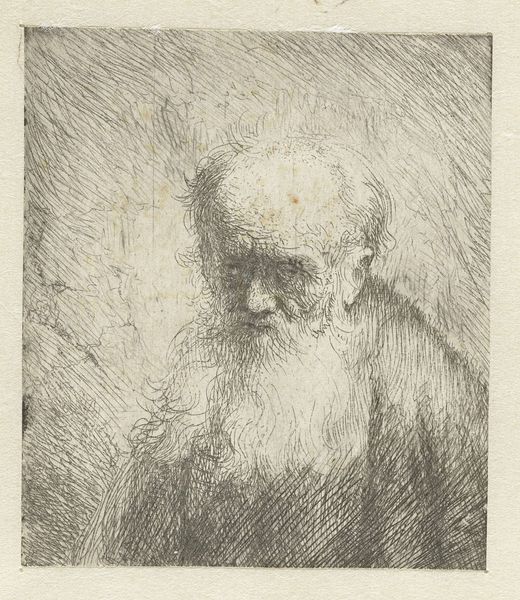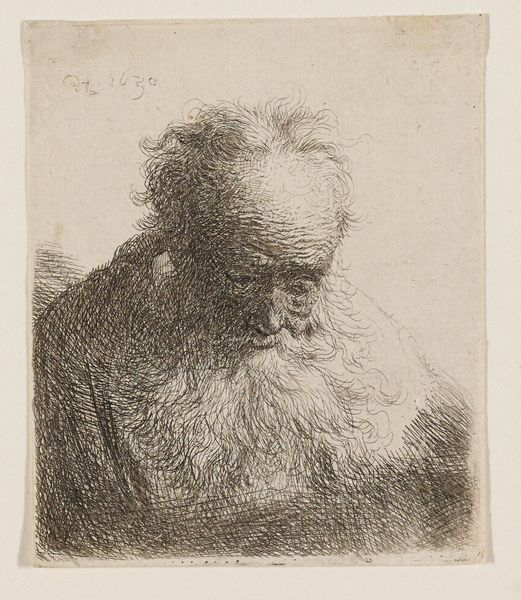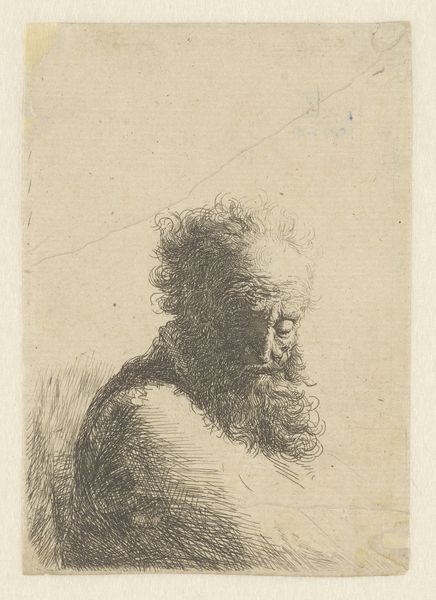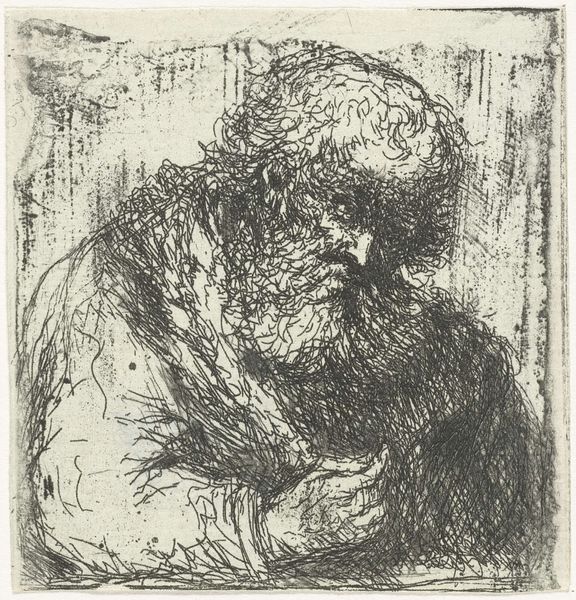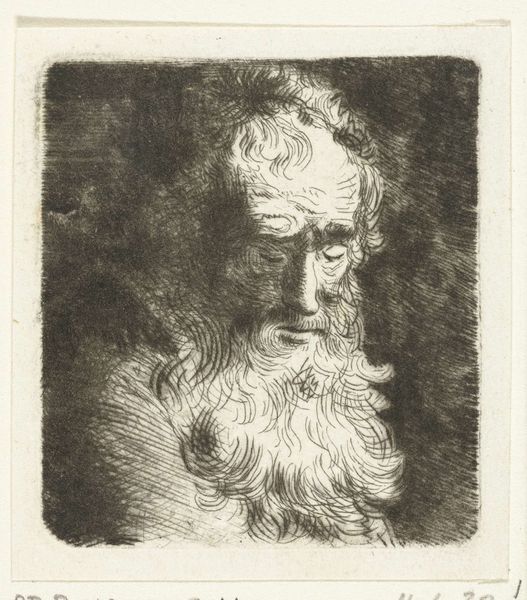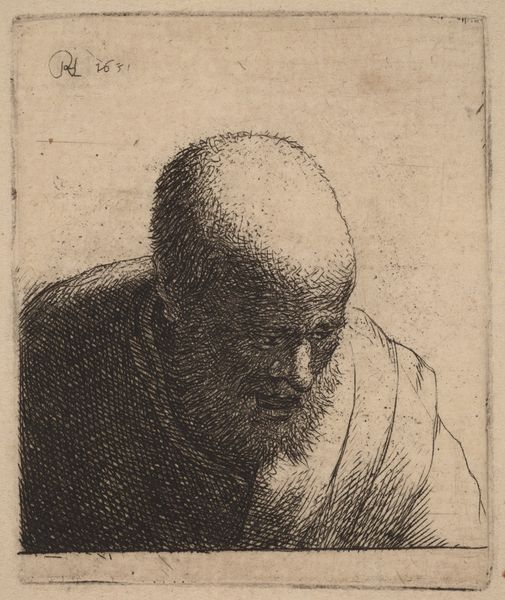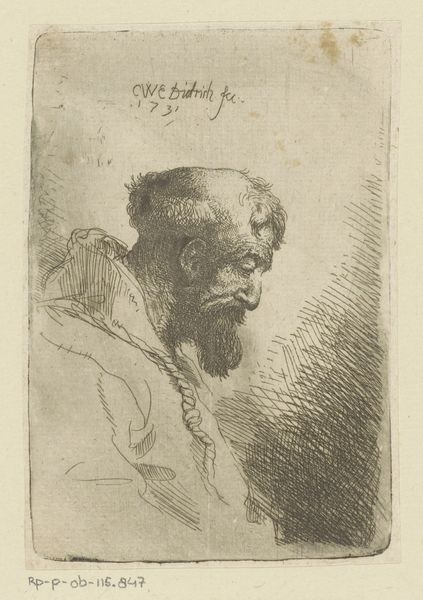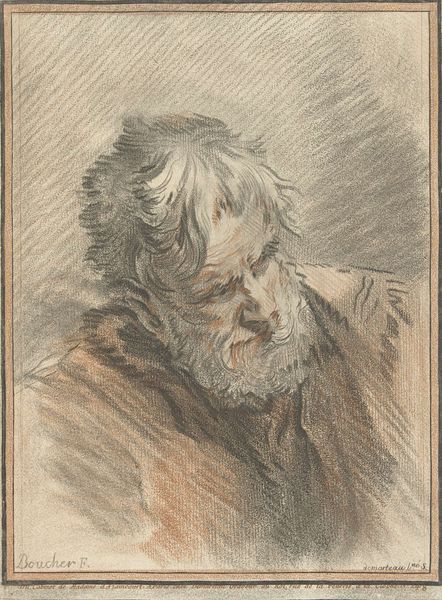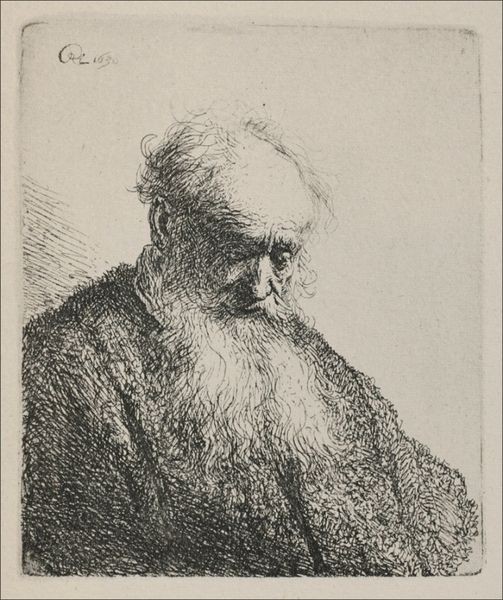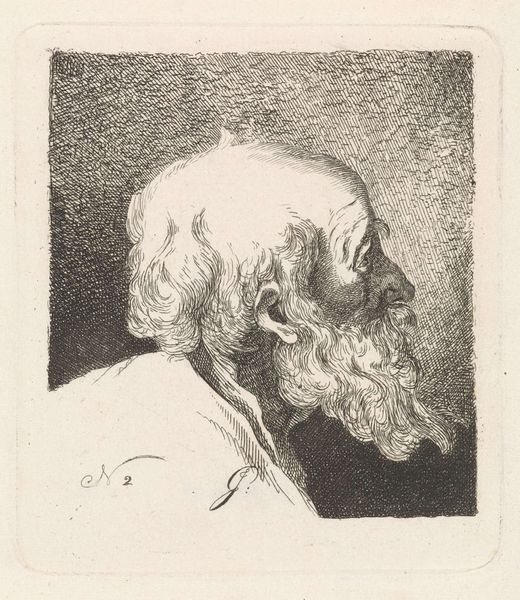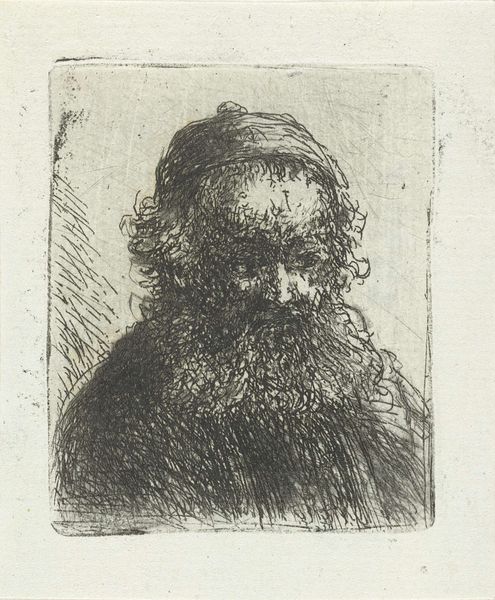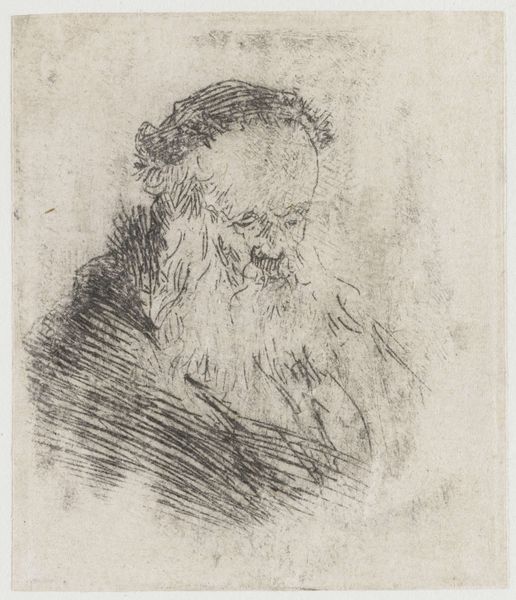
Bust of an old man with a flowing beard: the head bowed forward: left shoulder unshaded 1630
0:00
0:00
drawing, etching, intaglio
#
portrait
#
drawing
#
baroque
#
etching
#
intaglio
#
charcoal drawing
#
figuration
#
form
#
line
#
realism
Dimensions: height 91 mm, width 77 mm
Copyright: Rijks Museum: Open Domain
Curator: This intaglio print, etched by Rembrandt van Rijn around 1630, is titled "Bust of an old man with a flowing beard: the head bowed forward: left shoulder unshaded." Editor: My initial response is one of introspection. The subdued lighting and bowed head create a profound sense of melancholic reflection. What stands out to you formally? Curator: Immediately, the linework strikes me. The sheer density of the etched lines builds volume, and more interestingly, emotional weight. Look how the cross-hatching defines not just form, but also conveys texture—the wisps of the beard, the wrinkled skin—creating a rich visual tapestry. Editor: Indeed. The etching process itself is significant. The labor involved in carefully incising lines into the metal plate, the biting action of the acid, and the final printing – these are all critical to understanding the final product. Think about the workshop; what materials did Rembrandt have access to? The materiality fundamentally shapes our reading of this piece as a historical object, right? Curator: Precisely! And in terms of the material expression, note the strategic deployment of light and shadow. The absence of shading on the left shoulder pulls our gaze toward the illuminated face, effectively framing the subject’s inner world. The contrast amplifies the emotional intensity. Editor: And let’s not forget that prints were often made for dissemination; multiples meant affordability for broader audiences than original paintings. So the message isn’t simply confined to aesthetic values. Its meaning also exists within a framework of democratization through reproduction. It really complicates notions about the uniqueness of art, don't you agree? Curator: An excellent point, considering its baroque context. It is a complex intersection of aesthetic intention and societal role, especially when discussing form as a social indicator. Editor: I appreciate your careful description, which provides further historical depth. It reinforces the need to consider art not as separate, individual achievements, but as things born from distinct labor practices, class values, and systems of dissemination that influenced the experience of the art itself. Curator: And on the formal front, thinking about his effective use of light to suggest that history—all contained within this man's posture—is particularly compelling. Editor: Indeed. Rembrandt created much more than an image; he constructed a story out of metal, acid, ink and paper.
Comments
No comments
Be the first to comment and join the conversation on the ultimate creative platform.
